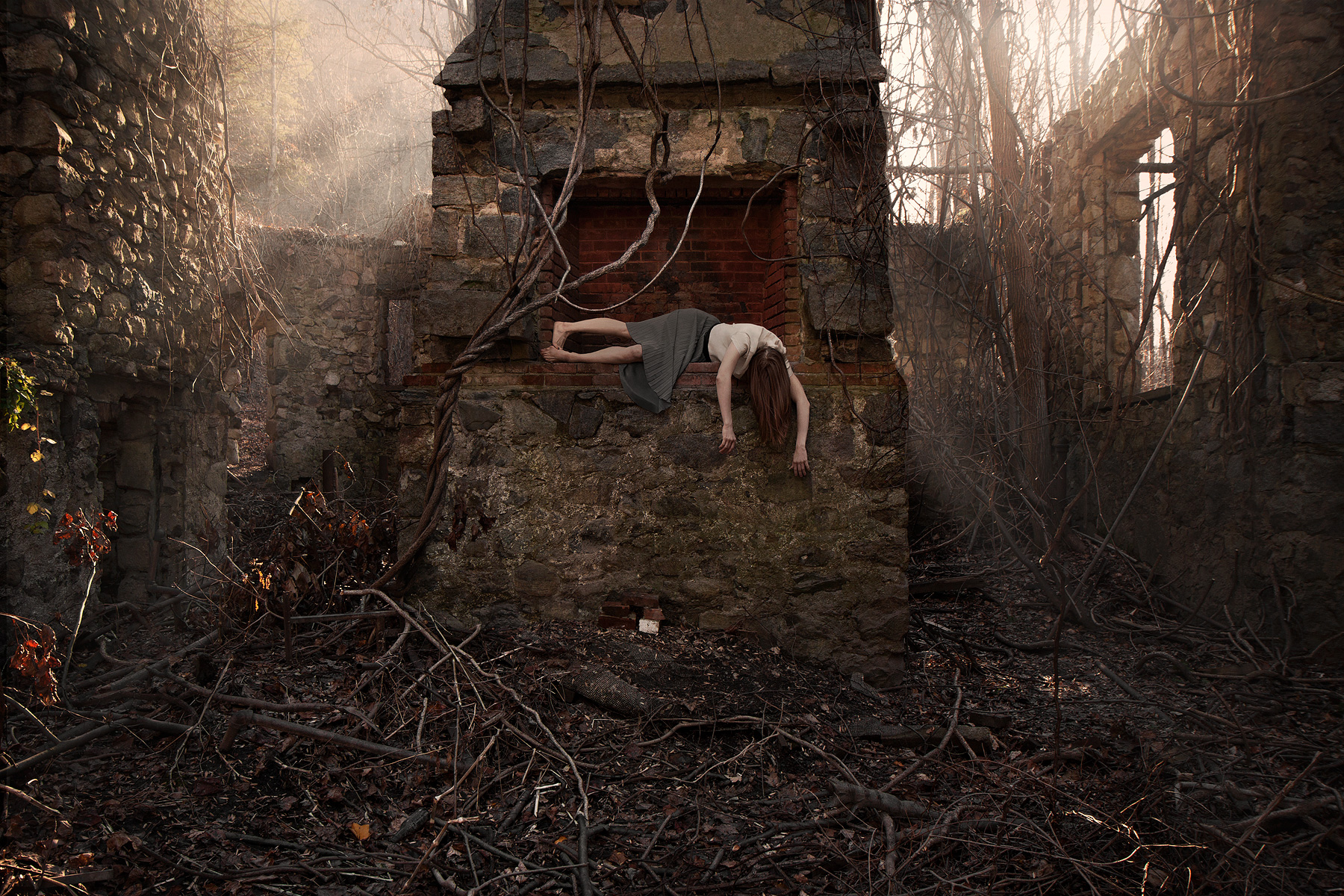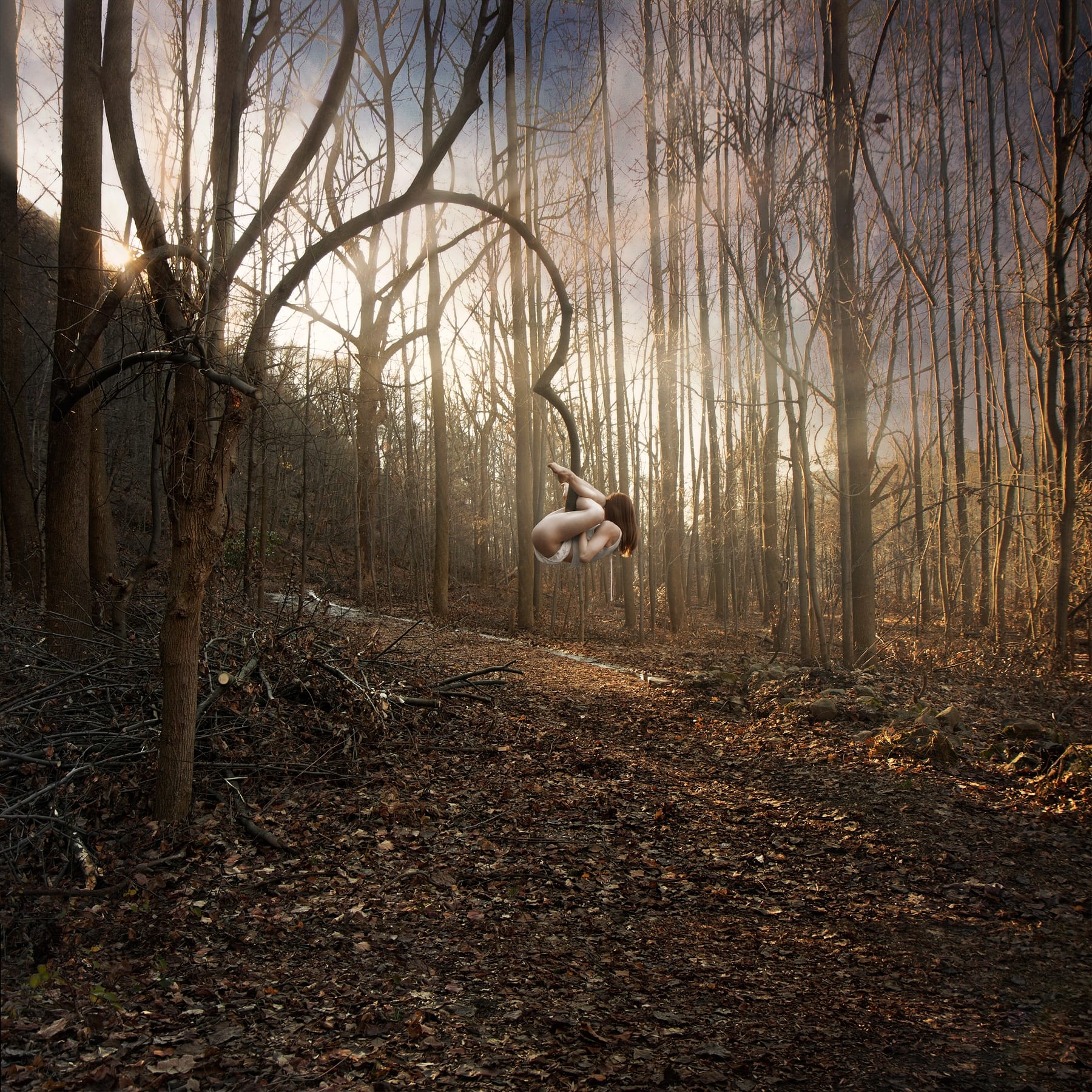The photographs of Haley Jane Samuelson take place in abandoned settings, quite often man-made structures being reclaimed by their natural surroundings. These places of transition provide the opportunity to position the feminine experience on a literal threshold of what once was and what is about to be.

I started photographing modern dancers in 2009, having just spent several years creating a series of self-portraits. I had grown frustrated with the process of being always both in front of and behind the camera and had been looking for subject matter that would allow me a new perspective on the work I was creating. I wanted to work from the outside in, rather than the inside out. Most of my work deals primarily with issues of identity construction, and the forces that guide it. Specifically, female identity construction, and the sort of schizophrenia that evolves from having to play multiple and often conflicting roles throughout our day to day lives. That said, I am not really all that interested in the representation of specific archetypes, or social/cultural models of femininity, (the Post-Modern/Cindy Sherman concept of identity) but in self-knowledge and in personal investigation.

Haley Jane Samuelson, Yesterday I woke up and the sky was full of blues, Digital C-Print, 24” x 24”, 2012
The title of the series, An Indecisive Moment references Henri Cartier-Bresson’s book The Decisive Moment published in 1952. In it, he claims that “Photography is simultaneously and instantaneously the recognition of a fact and the rigorous organization of visually perceived forms that express and signify that fact.” I have never agreed with this. For me, photography has always been an exploration of uncertainty, lack of commitment and of the unknown – a tool that cuts through the stale crust of consensual reality and allows us to see things for what they really are, which is often not exact or definite at all.

The images were all shot where I live in Cold Spring, New York, about an hour and a half North of New York City. This commute became an important part in the process of making the work, and in developing a collaborative relationship with the dancers. Initially, I was drawn to dancers as subjects because, unlike models, they are willing to suffer an infinite amount of torture for the sake of art. What I did not expect, was to find a group of women whose experiences and internal dialogues mimicked my own. Women who would be able to interpret my direction and incorporate it so seamlessly with their own personal experiences and the immediacy of their environment that it would feel like I was taking a self-portrait.

I don’t believe this would happen if there wasn’t a sort of pilgrimage that had to be made to the location. It was during our train rides, that we would (for lack of a better way to put it) get to know one another. I am not quite sure how to explain it, but there was a shared intimacy, perhaps it’s a symptom of female artists being overly open about their personal lives…I don’t know…but despite working with women of all different ages and in different phases of their life and careers there was this underlying thread that tied us all together which would become the basis of the work. And that is that we can be caught in between two mutually exclusive things at the same time, and how we are able to cope with that.

And what are we caught between? Between the reality of adulthood and the image of it; between the need to grow roots and the want to travel; the desire for independence and the longing for another; the diverse and suasive avenues of the heart; the meaning of transience; the sporadic despondency and the search for inspiration. And so, art became not the goal but the occasion and the method for telling our story. A complex narrative, it wrestles with a wide array of subject matter: sexuality, anger, love, death, beauty and fear, and hopefully it does so shamelessly and without self-awareness.

The photographs take place in abandoned settings, quite often man-made structures being reclaimed by their natural surroundings. These places of transition provide the opportunity to position the feminine experience on a literal threshold of what once was and what is about to be. While given some instruction, the dancers mostly draw from their own personal experiences and the immediacy of their environment to create their performance, which I then documented. This allows the work to function multiple levels, both personal and universal as we work together to create a unique portrait of womanhood on the brink.
Featured image: Haley Jane Samuelson, Yesterday I woke up and the sky was full of blues, Digital C-Print, 24” x 24”, 2012
All images © of the artist
